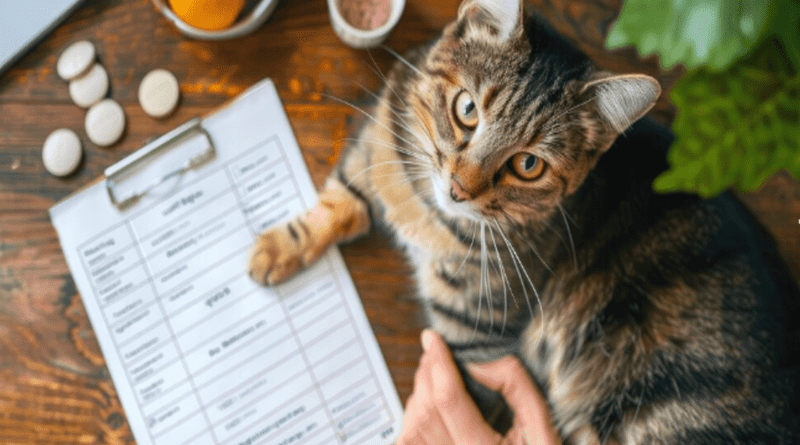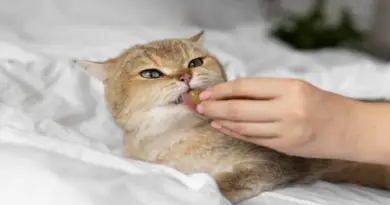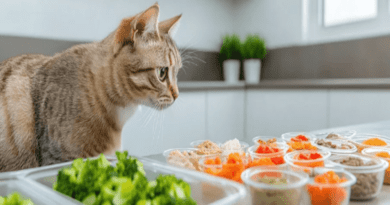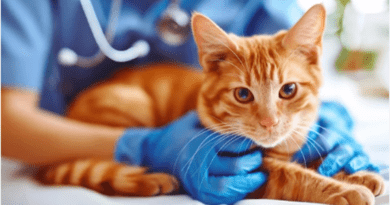Feeding Schedules for Cats
Feeding your cat properly is one of the most essential responsibilities you have as a pet owner. A well-planned feeding schedule supports their overall health, prevents obesity, and helps maintain consistent energy levels. Cats are creatures of habit, thriving on routine, which makes regular feeding times important. However, determining the best feeding schedule depends on several factors like age, health status, and lifestyle. This guide explores different feeding schedules and how to tailor them to meet your cat’s specific needs.
The Importance of a Regular Feeding Schedule
Cats, as natural hunters, tend to eat small meals throughout the day. In the wild, they catch several small prey, which is different from the habits of dogs or humans. A regular feeding schedule mimics their instinctual behavior and offers numerous benefits:
- Stable Energy Levels: Frequent, small meals provide a steady flow of energy throughout the day.
- Weight Management: Scheduled feedings prevent overeating, one of the leading causes of feline obesity.
- Routine and Comfort: Cats are creatures of habit, and consistent feeding times reduce stress and promote a feeling of security.
Developing the right schedule involves understanding your cat’s unique needs and adjusting based on their health, age, and activity levels.
Types of Feeding Schedules
- Free Feeding
Free feeding allows your cat to have access to dry food all day. This method works for some cats, especially those who are good at self-regulating their food intake. However, it can lead to overeating and weight gain in many cats. It is also not suitable for wet food since it spoils quickly. Free feeding works best for young, active cats who burn a lot of energy or in multi-cat households where competitive eating might be an issue. - Scheduled Meal Feeding
Scheduled meal feeding involves offering meals at specific times during the day. This method allows you to control portion sizes, prevent overeating, and monitor your cat’s food intake more closely. Two or three meal times a day often work well for most cats. This method also helps with building a routine and is useful when administering medications, as you can align it with feeding times. - Combination Feeding
A combination of free feeding and scheduled meals may be a good compromise. Some owners leave dry food out all day and supplement with a scheduled meal of wet food in the morning or evening. This offers variety while ensuring your cat gets the necessary hydration from wet food.
Age-Based Feeding Schedules
- Kittens (up to 1 year)
Kittens have high energy demands and require more frequent meals. A feeding schedule of four to five small meals a day works best. It ensures they get the necessary nutrients to grow and develop into healthy adult cats. - Adult Cats (1 to 7 years)
Most adult cats thrive on two meals per day, ideally 8-12 hours apart. At this stage, portion control is crucial for maintaining a healthy weight. Adult cats benefit from a balance of wet and dry food, as the wet food provides additional hydration. - Senior Cats (7+ years)
Senior cats might need smaller, more frequent meals, especially if they suffer from health conditions like diabetes or kidney disease. A customized feeding schedule based on their specific medical needs should be discussed with your vet. Often, senior cats do better with more wet food in their diet due to hydration needs.
Factors to Consider
- Health Conditions
Cats with specific health issues like diabetes or hyperthyroidism may require specialized feeding schedules. Diabetic cats, for example, often need to eat right before receiving insulin to prevent blood sugar spikes. Always consult your vet to create a feeding plan that supports their health condition. - Activity Level
Active cats, especially outdoor ones, tend to burn more calories than indoor cats. If your cat roams outside, they might require larger portions or additional meals throughout the day. Conversely, indoor cats who are less active need fewer calories to maintain a healthy weight. - Multi-Cat Households
Feeding schedules in a multi-cat household can be challenging, especially if some cats have different dietary needs. You might need to create individual feeding stations or separate mealtimes to ensure each cat gets the appropriate amount of food.
The Role of Treats and Snacks
While treats can be a fun way to reward your cat or help with training, they should not interfere with the primary feeding schedule. Too many treats can contribute to weight gain and upset the balance of your cat’s diet. Stick to moderation, and account for any treats when determining your cat’s daily calorie intake.
A well-structured feeding schedule plays a significant role in your cat’s overall well-being. Whether you opt for free feeding, scheduled meals, or a combination, the key is consistency. By tailoring the feeding schedule to your cat’s age, health, and activity levels, you ensure they get the nutrition they need without overfeeding. Regular mealtimes not only support their physical health but also provide them with a routine that reduces anxiety and stress. As always, consult with your veterinarian to ensure your feeding schedule aligns with your cat’s specific dietary requirements. With a well-planned schedule, you’re giving your cat the best possible care and setting them up for a long, healthy life.




